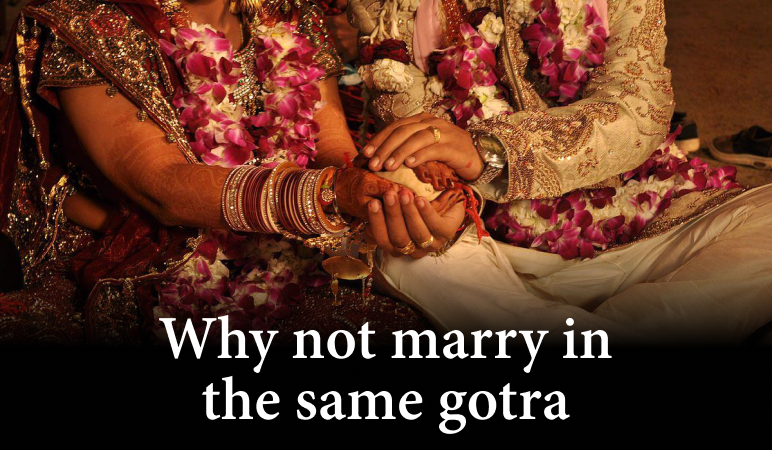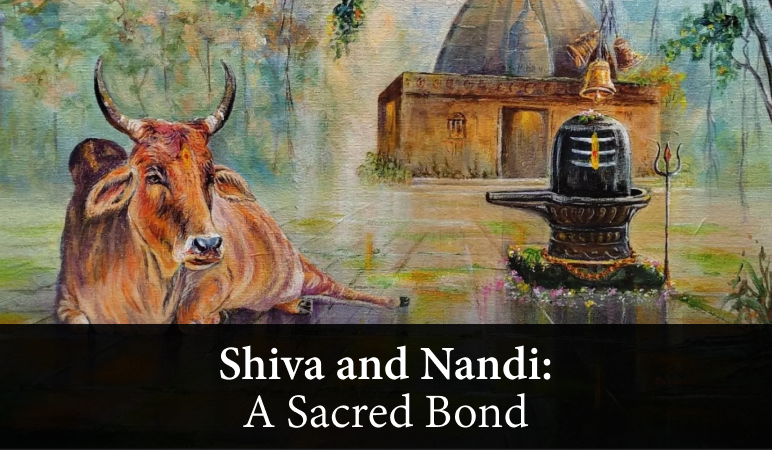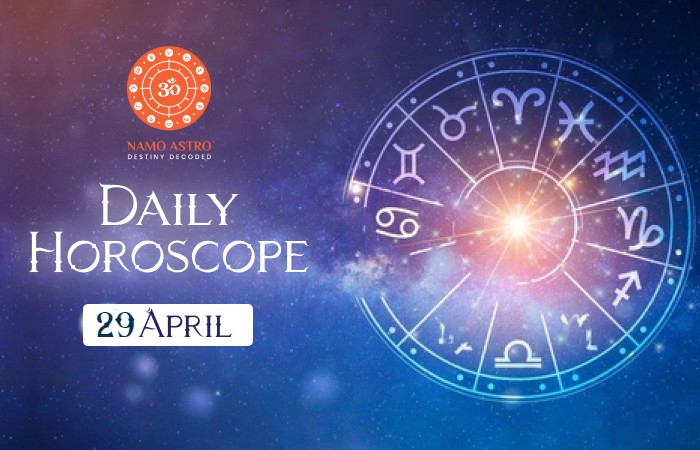Why One Should Not Marry in the Same Gotra?

“When the man and woman do not belong to six generations from the maternal side and also do not come from the father’s lineage, marriage between the two is good.”
- Gotra System (Manusmriti 3/5)
Marriages in Hinduism are sacred. They are not random and are considered affairs of seven lives. Marrying someone is not an easy process. It starts with kundali matching and gotras and then there are so many rituals to be done. And that’s probably what makes it all the more emotionally fulfilling and sacred. Because it is written in stars. And they find meaning when performed correctly with all the rituals.
Here, we will be discussing one of the important rituals or aspects of marriage gotra matching. We have all heard about it. But not all of us know what the significance of Gotra matching is. Why is it important to not marry in the same gotra? Is it scientifically backed as well? And so many other things. So, let’s get started.
What is Gotra?
In Hinduism, the term “gotra” is like a family clan. It includes people who are descendants in a continuous line from a common male ancestor. This is often on the father’s side. The gotra is a group where marriages within that group are not allowed or seen as improper. The gotra name is sometimes used as a surname, but it’s not the same as a regular surname.
It’s essential in marriages among Hindus, especially in higher castes. According to Pāṇini, gotra means the descendants starting from a son’s son. So, when someone says, “I am Kashyap-gotra,” they mean their family line goes back to the ancient sage Kashyap through a continuous male line.
Brahmins trace their family lineage by considering themselves descendants of eight great sages known as Saptarshis plus Bharadwaja Rishi.
These sages are:
- Angirasa,
- Atri,
- Gautam,
- Kashyapa,
- Bhrigu,
- Vasistha,
- Kutsa,
- and Bharadwaja.
They are called Gotrakarin, meaning the roots of Gotras. All other Brahmin Gotras, like subgroups within the community, originated from one of these eight Gotras.
In simpler terms, over time, the descendants of these sages started their own Gotras, and today there are a total of 49 established Gotras among Brahmins. However, all these Gotras ultimately trace back to one of the eight-root Gotrakarin Rishis.
Pravaras and the Gotras
The Pravara system is like a list of the most important ancestors in a lineage of a Gotra (a subgroup within a community). When the descendants of ancient ones created new Gotras, they kept a list of these special ancestors, called Pravaras, and connected them to the newly formed Gotras.
For example, the Vatsa Gotra has Bhargava, Chyavana, Jamadagnya, and Apnavana as its Pravaras. This means that Vatsa Gotra includes all these Gotras in its family tree and traces its origin back to Bhrigu Rishi in the list of Gotrakarins.
The purpose of the Pravara system is likely to be to ensure that the new Gotras remember their roots. It is important to make sure that individuals from two different Gotras that originated from the same root Gotra don’t marry each other. Each derived Gotra keeps a list of Pravaras linked to it.
This is because the main idea behind the Gotra system is to avoid marriages within the same Gotra. If two derived Gotras, coming from the same original Gotra, forget their common origin over time, they might allow marriages within these Gotras since they have different names. To prevent this, the derived Gotras kept a record of Pravaras, which marks the significant points where new Gotras were created. Another rule in the Gotra system says that even if the bride and groom belong to different Gotras, they still can’t marry if just one of their Gotra Pravara matches.
This rule ensures that marriages don’t happen between derived gotras that share the same root gotra.
Marriages in the same Gotra
In traditional Hindu marriages, it’s not allowed for people from the same gotra (known as ‘sagotra’) to get married. The term ‘sagotra’ comes from combining ‘sa’ (meaning same or similar) and ‘gotra’ (meaning clan lineage). Before approving a Hindu marriage, it’s common to check the kula-gotra (clan lineage) of both the bride and groom. Marrying someone within the same gotra is considered taboo because they are seen as siblings.
Most Hindu families don’t encourage or practice marriages within the same gotra, as they believe these individuals are descended from the same family. Marriages between different gotras are encouraged, but marrying within the same community is allowed and even preferred.
For instance, Jats and Rajputs have around 3000 gotras, and Mudirajas in Andhra Pradesh and Tamil Nadu have 2600 gotras. Gotra is usually passed from the father to the children in most Hindu families, but among Malayali and Tulu people, it’s passed from mother to child.
Marrying in the same Gotra is even discouraged by scientific thinking as well. Let us see what science has to say about the same Gotra marriages.
The Science Behind Gotra Matching
Scientific studies show that marrying close relatives can result in abnormal children due to genetic issues. When blood relatives have children, there’s a higher risk of genetic mismatches and unusual DNA combinations. This can affect the ability of humans to adapt to environmental changes and evolve. Marrying immediate cousins, for example, may lead to weaker genes.
To avoid the birth of such children, the Gotra system was established in the 4th century. The wise people of that time understood the problems that could arise from marriages among close relatives. So, they introduced the Gotra system as a custom to prevent such marriages and their potential consequences.
Chromosomes and Genes
We all know about chromosomes. Females have XX chromosomes, and males have XY chromosomes. Everyone needs at least one X chromosome. In females, each egg carries one X chromosome. Males with XY chromosomes produce two types of sperm: some carry the X chromosome, and others carry the Y chromosome.
Here, the Y Chromosome is a special chromosome passed down exclusively from fathers to their sons. Women do not inherit the Y Chromosome. This unique trait of the Y Chromosome is crucial in modern genetics for tracing male ancestry. The Gotra system was created to easily identify the root Y Chromosome of a person.
For example, if someone belongs to the Angirasa Gotra, it means that their Y chromosome has been passed down over thousands of years from the Rishi Angirasa. If a person is part of the Bharadwaja Gotra with Pravaras (Angirasa, Bhaarhaspatya, and Bharadwaja), it means their Y chromosome has travelled through the line of Angirasa to Bhaarhaspatya to Bharadwaja and eventually to them.
This also explains why, in the Gotra system, women are said to belong to the Gotra of their husbands after marriage. Since women don’t have the Y chromosome, their sons inherit it from their fathers, carrying the paternal genetic material. Therefore, a woman’s gotra is considered to be that of her husband after marriage.
So, the ancient Vedic Rishis were aware of the Y chromosome and the way paternal genetic material passes almost unchanged from father to son. They designed the Gotra system to identify and trace their male lineages. For instance, Lord Buddha belonged to the Gautama Gotra, signifying that he was a direct descendant of Rishi Gautama.
What Vedic Astrology Says About Gotra in Marriage?
Vedic astrology strongly advises against marriages within the same gotra due to the reasons mentioned earlier. This is why people in Hindu culture don’t support such marriages.
From above details, you can find out why astrology as well as science do not advocate for same gotra marriages. In recent times, there has been an increase in demand for matching blood groups among prospective brides and grooms. It is based on very recent and modern Western research that couples with same blood group should not marry each other, as it can cause genetic defects in the children born to them. It proves that thousands of years ago, ancient Sanatan Hindu rishis and maharishis were far more advanced, aware of it and cautioned the human race about the consequences of marrying within the lineage. However, it is very crucial to take note of this factor that marrying within gotra is not advisable, as per Sanatan Hindu culture.
For any query, you can talk to or consult our experts at NamoAstro.









